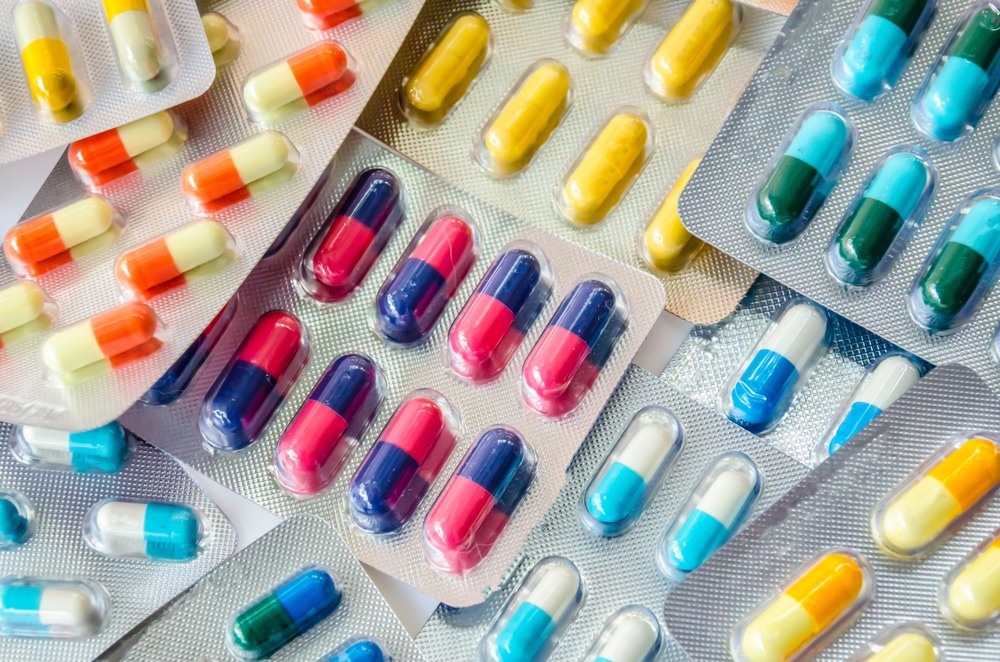研究发现,COVID-19危重患者出现社区获得性细菌合并感染的情况并不常见,但医生通常会开具经验性抗生素
概要
在最近发表在《开放论坛传染病》上的一项研究中,研究人员评估了大流行中经验性抗生素的使用情况,以确定住院的危重COVID-19儿科患者中社区获得性细菌合并感染的流行率,并确定在高危人群中没有细菌导致的败血症的背景下,降低抗生素使用机率以及出现休克的可能性。
新冠住院患者中出现社区获得性细菌合并感染的情况并不常见,但在临床应用中,经验性抗生素的使用量极大。这是因为严重新冠感染的临床表现通常包括肺部不适和发热,这些症状可能难以与严重的细菌感染相区分。这促使医生在患者(特别是高风险人群)住院的最初几天,为其治疗使用经验性抗生素。
研究人员调查了患者住院期间可确定的任何放射学或临床特征是否与经验性抗生素使用有关,或者是对在社区环境中获得的细菌合并感染进行了评估。
调查数据显示,在532名受试者中,63.0%的人使用了经验性抗生素;然而,只有7%的人出现了细菌性合并感染,其中只有3%的人是呼吸道类型。最常开的抗菌素是头孢曲松(41%)和万古霉素(28%),其次是头孢吡肟(20%)。尽管没有证据表明有细菌性合并感染,大多数人还是被开了多种抗菌素,超过33%的人接受了≥5.0天的抗生素。只有7%的人有真正的社区获得性细菌合并感染。
总的来说,研究结果显示,在危重的COVID-19患儿中,社区获得性细菌合并感染并不常见。但是,医生通常会为其开出经验性抗生素。
Study finds community-onset bacterial coinfection in children with critical COVID-19 is infrequent but empiric antibiotics are commonly prescribed
In a recent study published in Open Forum Infectious Diseases, researchers evaluated the use of empiric antibiotics to determine the prevalence rates of community-acquired bacterial coinfections among hospitalized pediatric critical coronavirus disease 2019 (COVID-19) patients and to identify opportunities for de-escalating antibiotic usage in case of no bacteria-caused sepsis among high-risk individuals, and those presenting with shock.

Study: Community-onset bacterial coinfection in children critically ill with SARS-CoV-2 infection. Image Credit: nokwalai/Shutterstock
Background
Community-acquired bacterial coinfections among hospitalized adult coronavirus disease 2019 (COVID-19) patients are uncommon; however, empiric antibiotic usage is reportedly high. Data on empiric antibiotic usage and bacterial coinfections among pediatric individuals with critical severe acute respiratory syndrome coronavirus 2 (SARS-CoV-2) infections are limited.
The clinical manifestations of severe SARS-CoV-2 infections often include pulmonary distress and fever, findings that could be difficult to discriminate from serious bacterial infections, which might prompt the use of empiric antibiotics in the initial days of hospitalization, particularly among high-risk individuals.
About the study
In the present study, researchers used five COVID-19 autopsies and one uninfected postmortem case to retrieve tissues for SSCTA analysis. All tissues exhibited pulmonary thromboembolism, lymphocytic infiltration, and DAD of varying degrees after staining with hematoxylin and eosin (H&E).
In the present study, researchers investigated whether any radiographic, laboratory, or clinical features ascertainable during hospitalization were related to empiric antibiotic usage or were estimative of bacterial coinfections acquired in community settings.
The team evaluated individuals below 19.0 years and admitted to pediatric high-acuity units (HAU) or intensive care units (ICU) due to SARS-CoV-2 infections from March 2020 to December 2020. On the basis of microbiology reports from the initial 72 hours of hospitalization, the team adjudicated if patients had community-acquired bacterial coinfections.
Clinical and demographic variables of individuals with and without antibiotic prescriptions and bacterial coinfections in the initial days of hospitalization were compared. Poisson regression modeling was performed to assess factors related to the outcome, and the adjusted relative risk (aRR) values were calculated.
Data were obtained from patient electronic medical records and data from the nationwide overcoming COVID-19 population health active surveillance registry of patients hospitalized due to COVID-19-associated complications between 15 March 2020 and 31 December 2020 across >70.0 pediatric hospitals in 25 states.
COVID-19 diagnosis was confirmed using polymerase chain reaction (PCR). The team excluded multisystem inflammatory syndrome among children (MIS-C) patients diagnosed using the Centers for Disease Control and Prevention (CDC) criteria. Data were obtained on demographic parameters, clinical symptoms and signs, comorbidities, radiographical and laboratory investigations, and data on antibiotics prescribed at admission and the course of critical COVID-19, including clinical outcomes and hemodynamic and respiratory support needed.
The primary study outcome assessed was the prescriptions of empirical antimicrobials, for which enteral or intravenous antimicrobials administered in the initial two days of hospital admission were assessed. The second outcome evaluated community-acquired bacterial infection presence, for which relevant case report form (CRF) information from individuals with SARS-CoV-2-positive microbiological cultures, and PCR, were analyzed in the initial 72 hours of hospital admission.
Results
Out of 532 individuals, 63.0% were administered empiric antibiotics; however, only seven percent developed bacterial coinfections, of which only three percent were respiratory-type. Empirical antibiotics had a greater likelihood of being prescribed to immunosuppressed individuals (aRR of 1.3), requiring non-mechanical ventilator-type respiratory aid (aRR of 1.4), or requiring invasive-type mechanical ventilators (aRR of 1.8), than no respiratory aid.
The most frequently prescribed antimicrobials were ceftriaxone (41%) and vancomycin (28%), followed by cefepime (20%). Most individuals were prescribed multiple antimicrobials, with 21%, 10%, and 18% receiving 2.0, 3.0, and ≥4.0 antibiotics in the initial two days of hospital admission. More than 33% of individuals received antibiotics for ≥5.0 days, despite no evidence of bacterial coinfections. The median social vulnerability index (SVI) values were significantly greater among those who received antibiotics than those who did not.
The median C-reactive protein (CRP) levels were greater among those who received antibiotics versus those who did not (4.6 mg per dL vs. 2.2 mg per dL), as were the median procalcitonin levels (0.4 ng per mL vs. 0.1 ng per mL). The median leukocyte counts showed no significant differences between the two groups. Antibiotic usage was related to COVID-19 severity, indicated by greater median values for PEdiatric Logistic Organ Dysfunction-2 (PELOD-2) scores at hospitalization among individuals who received antibiotics than those who did not.
Seven percent (n=38) of individuals had true community-onset bacterial coinfections, of which 13, 16, 8.0, and 4.0 were bloodstream infections, respiratory infections, urinary tract infections, and bacterial infections at other sites (peritonitis, colitis, meningitis, and pharyngitis), respectively.
No particular pathogenic organism predominantly caused bacterial coinfections, although most pulmonary coinfections were caused by Staphylococcus aureus and/or Pseudomonas aeruginosa. Greater PELOD-2 scores at admission were associated with bacterial coinfections (aRR of 1.2), in addition to age, sex, and pulmonary conditions other than asthma (aRR 2.3).
Conclusions
Overall, the study findings showed that community-onset bacterial coinfections among children with critical COVID-19 are not frequent; however, empiric antibiotics are usually prescribed. The study findings inform antibiotic use and underpin swift de-escalation in case assessments indicating that coinfections are not likely.
Source:
News Medical
Published on Mar 1 2023
声明:本站文章版权归原作者及原出处所有。本文章系本站编辑转载,文章内容为原作者个人观点,登载该文章的目的是为了学习交流和研究,并不代表本站赞同其观点和对其真实性负责,本站只提供参考并不构成任何投资及应用建议。
本站是一个学习交流和研究的平台,网站上部分文章为引用或转载,并不用于任何商业目的。我们已经尽可能的对作者和来源进行了告知,但是能力有限或疏忽,造成漏登或其他问题,请及时联系我们,我们将根据著作权人的要求,立即更正或删除有关内容。本站拥有对本声明的最终解释权。








